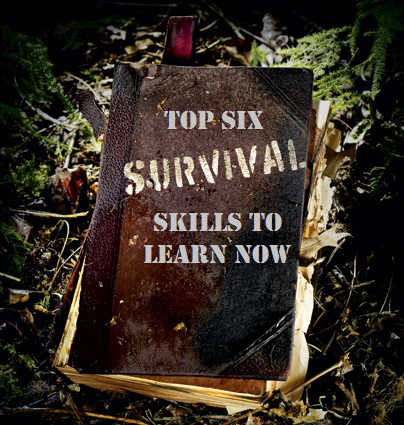
There are a lot of things that you could possibly spend your time on to get yourself ready in case you’re lost in the wilderness while hunting or checking out your bugout route. I debated how many categories I wanted to have but I think I came to a decent compromise. Here are the top six skills you should learn now, before you find yourself in a situation where you need to use them.
They’re not the only skills you need but you have to start somewhere. For example, I left out Navigation. It’s an important skill but not as critical as the ones below. In most cases, you should be sitting still and waiting for help but If I were to make this the Seven Survival Skills you should learn now, I’d put navigation next. On the off chance you really need to be traipsing off into the wilderness, you’ll need to navigate. The problem is that every hour you spend learning how to navigate is an hour you aren’t learning how to keep yourself alive that day. You don’t have an unlimited amount of time, so you have to prioritize things. I’d rather be someone who knows the list below first and then starts working on other things like navigation and plant identification after they get these down. Navigation is an everyday skill that you need when you’re in the wilderness so you don’t need to survive. It’s a survival skill only when you messed something up – like navigating in the first place. Not saying you shouldn’t learn navigation – you should. Just doesn’t do much good to know how to walk your ass out of the woods for three days if you die the first night. Once you have these 6 covered, consider navigation as well as several other skills such as making cordage etc.
That being said, since we don’t know what situation you’re gonna be in, navigation, or any other skill not listed here, may be the most important one to learn to keep you alive someday. You really need to know what you’re prepping for and rebalance as necessary. If you know you’re heading out into somewhere that you may not have rescue coming, you need to pull navigation into your required learning. Or whatever else may be able to help.
Obviously, each of these categories could fill an entire book so I’m just gonna explain why I chose each and give a few examples to get you started.
There are six top skills you should focus on learning. You should also pack your bugout bag and EDC with equipment to help you with each of these skills:
-
Fire
-
Water
-
Shelter
-
Food
-
First aid
-
Signal
Fire
The first survival skill you need to know is how to make a fire. Why? It’s hard to know exactly which skill is the most important in any situation but in general, I think making a fire is the most important. With a fire, you can keep yourself warm, purify water, see in the dark, cook food, signal for help, make tools, sterilize surgical equipment and protect yourself from critters. Having a fire is also a huge psychological advantage. Plus, it’s a manly-mans skill to know.
You should learn at least three ways to start a fire. If you’re heading out to an area and know this in advance, you should learn how the local people use local resources to start fires there. One of the best people to learn this from are native people who’ve been there for hundreds of years. Actually, this goes for all of these skills except maybe signaling for rescue.
A big part of having a fire is actually building your fire site so it’ll not only catch, it’ll stay lit. You need to know the basics of how to build a fire as well as some local materials that you can use for tinder, kindling and fuel wood. If you don’t get this part right, it won’t much matter what you use to try to light it.
The first method you need to learn to build a fire is using whatever gear you bring with you. Hopefully you have a bugout bag or at least an EDC kit. Hopefully you’ll at least have a lighter. A stormproof lighter is a better choice than a regular one because, well, I’m sure you can figure that one out. You should also carry some kind of ferrocerium rod with magnesium that you can flake off
. You should always have a cheap 99 cent lighter as a backup because they’re just hella cheap and work in most conditions.
Here’s a video to show you how to use a ferrocerium rod, also called a fire steel:
You need to learn at least two other methods of how to start a fire. Since I don’t know where you’re gonna be when you need to start a fire and your lighter/rod isn’t available, I’d suggest learning how to start a fire with a fire bow and with a hand drill. They’re both a lot of work so go for the lighter if you have one.
How to start a fire with a bow drill
How to start a fire with a hand drill.
A must-have item in your pack should be a cheap fresnel lens. They’re only a few bucks and about the same size and weight as a piece of paper. I like these so much I did a whole review on them.
Water
The next skill you need to have is how to get water you can drink. Depending on your circumstances, this one may actually be more important than getting a fire. You can go 2-3 days without water but you’ll start degrading long before that. You should be thinking about your water situation as soon as you figure out you’re screwed.
I carry a Sawyer Mini water filter in my bugout bag but I know most people prefer the LifeStraw filter
. You should look at both. I even keep a MINI on my motorcycle as well as in my personal go bag. It’s a handy little thing that doesn’t take up much room.
If you have a fire then boiling your water is usually the best way to make it drinkable. It’s not a 100% solution but it’s pretty close. If you don’t have a container that you can put water in and sit in the fire, heat up rocks and drop them into your water.
If you have a plastic bag, you can collect water from plants.
With a little more work, you can create a solar still, which works off the same principal.
Survival Camping: #2 Seawater, Solar Stills & Seeps
Shelter
If you don’t have a tent with you for some reason, hopefully you at least have a tarp. You really should get a tent though. They’ve come a long way and you can get really nice ones that you can fit on or in a bug out bag now.
In case you don’t have anything, you should at least learn how to make a debris shelter. They cost less effort than most shelters as long as you have something available in the area. They won’t stand up to heavy winds though.
Food
Once you’ve gotten fire, water and shelter, you probably want to be thinking about food. You may be able to go a month without food without dying but in addition to the incredible amount of suck there is without eating for several days, you start losing energy to do things. One of these things is thinking. If you don’t have food in your belly, you’ll eventually start making mistakes a lot more often.
Hopefully you brought some MREs with you or at least some kind of emergency rations. I also keep a small container of olive oil because you can’t beat the amount of calories it packs per ounce and it can be used for other things.
If you don’t have food with you, you’ll have to find some. If you have a river, lake, or ocean around, fish are one of the best foods to go after. Obviously, you can make a hook and may be able to find some kind of line and some bait but a basket is usually a better option. Here’s one way to make one using vines.
For small animals, a snare trap is a great thing to learn because it’s not too difficult, can work if placed in the right spot, and you’ll probably be able to find material for. You need to do it a couple times so you know how each piece works in the system. I’d suggest putting it on a path where you can see small animals go through or making a trail funnel with some logs or stones to force them to go where you want.
You should also become familiar with the plants and animals in whatever area you’re thinking about going into. Plants are the safest and simplest way to eat but you have to know what you’re doing. I don’t care what they taught you about the Universal Edibility Test though, it’s crap. You shouldn’t be eating something if you don’t know what it is.
Here’s another pretty simple redneck mousetrap that you can use for more than just mice. I don’t know who originally filmed this gif (let me know if you find out) but it’s pretty much everything you need to know to make one yourself. The concept is pretty simple. Just use what you have available even if you have to dig a pit and put a smooth stick across it with a coke can or something:

First aid
Hopefully you’ve brought along a first aid kit. Even if you did, you still need to know how to use it. I’d suggest getting EMT certified if you can. If you don’t have the time or inclination to do that, at least get good book on survival medicine
and study it.
For the most part, you need to know the basics of keeping a wound closed and clean, setting and immobilizing broken bones and identifying/treating for shock, hypothermia and heat exhaustion but you need to learn more if at all possible.
Signal
If you’re stuck out in the wilderness, hopefully you were smart enough to let someone know where you’re going and when to expect you to make contact. Or, you may be out there because your car broke down or your plane crashed. In any of these cases, your best bet is to sit tight and wait for rescue. That doesn’t mean that it’ll be easy to find you, even if they know where to look. You need a way to signal someone passing through that you’re there and need some help.
The big key is to be noticeable. If you can’t stay out in the open, put something out in the open that they’ll notice. Try to use movement, color and shapes that don’t fit in the area. Try to make it unusual. If you’re in the US, do things in groups of threes like three logs laid out in a field or three rocks together. In the UK and the Alps, use six.
Also consider building signaling into your equipment by doing something like sewing a rescue signal panel into the inside of your jacket or have a way to hook it onto the outside of your tent.
If your bag has a ham radio, try 156.8MHz or 2182kHz. You’ll want to save your battery so just pop up on the radio occasionally or if you hear or see anyone. Get as high as possible. The BaoFeng UV-5R is EXTREMELY cheap. It also has frequencies on it that you don’t need a license to use.
Because they use aircraft for search and rescue, it’s a good idea to have a way to communicate with them. A signal mirror is a pretty good thing to have because in the daylight, it’ll allow you to do just that. They don’t take up too much room in your bugout bag and can even fit into your EDC (are you getting the idea yet that you should have an EDC kit and bugout bag already figured out?). By the way, EDC means Every Day Carry. It’s what you have with you at all times during the day that you don’t ever set down.
Here’s an old WWII training video on how to use one.
If you’ve built a fire previously then a signal fire is also a good idea. The key is to have it ready to go when you see or hear someone and have it in a place that they’ll notice.
There are a lot of different things that you can do to prepare for being stranded in the middle of nowhere but the key is to start preparing now. You may not have any equipment you need (but hopefully you at least have a knife, lighter and a flashlight) but with the right knowledge and skill (some of this stuff requires practice), you’ll do fine. If you’re like me, you like to read and research things that you learn. I can only go over so much in an article but a book like SAS Survival Handbook, Revised Edition: For Any Climate, in Any Situation has a LOT of good information in it. It’s the best one I’ve found so far to teach you how to do these things.



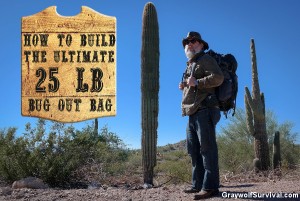

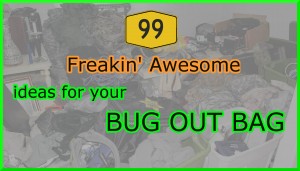
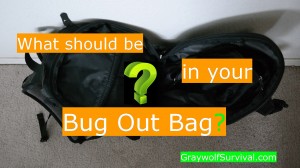

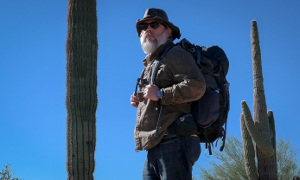
I WAS DOING SOME SHOPPING FOR A GOOD WATER FILTER SOMETHING THAT LOOKED RUGGED , EASY TO USE HAD DIFFERENT USES
WHAT I FOUND is the new, MINI SAWYER WATER FILTERS. They are sold at Academy,filter 100,000 gallons of water. It is a complete kit. I have 2 of them.
I found that the sawyer regular is not much different in size cost about $10 more but will filter a million gallons
The Renovo filter is supposed to be even better than the Sawyer Mini if the water is extra nasty, I believe it will ever filter the toxins from algae blooms like they were dealing with in Toledo. (One source said yes, but I would like to hear it from Renovo too).
Harbor freight has their Magnesium bar/ferro rod on sale this month, I have a couple of them they are great for getting a fire started even if things are a little damp.
Do you remember where you saw that about the Renovo being better? I kinda doubt that myself.
Hi GrayWolf,
I like your attitude. I’m not military, but don’t beleive in any of this doomsday crap. I like what you say about staying put and not putting in a navigation section here.
I agree with you here that if people just learn the solid skills you talk about here, they can be comfortable while they wait for help. Nice to see someone else who has real world experience with survival skills teaching others.
I love this roundup of essential skills you will need in case you find yourself face to face with Mother Nature. The idea of being certified in First Aid, and subsequently CPR, is typically applied to emergencies where you are a bystander and someone else suffers the injury. However, if you are alone in the wilderness (and even if you are not), understanding basic First Aid and being equipped with proper First Aid supplies can make a huge difference. Thank you so much for this interesting take on safety, I am sure your fellow nature lovers will appreciate it.
I’ve got the SAS survival guide. Its a great book. definitly recommend!